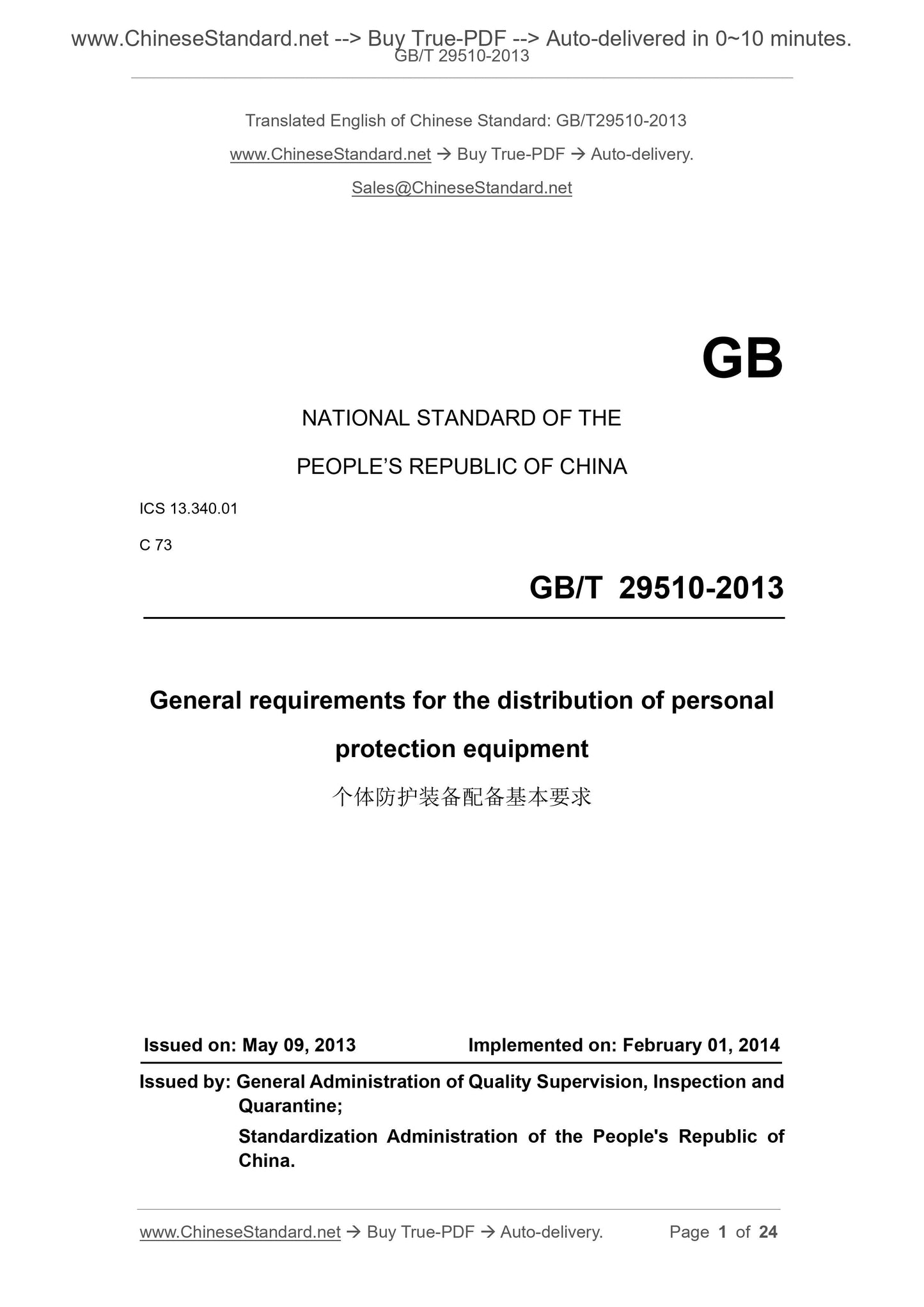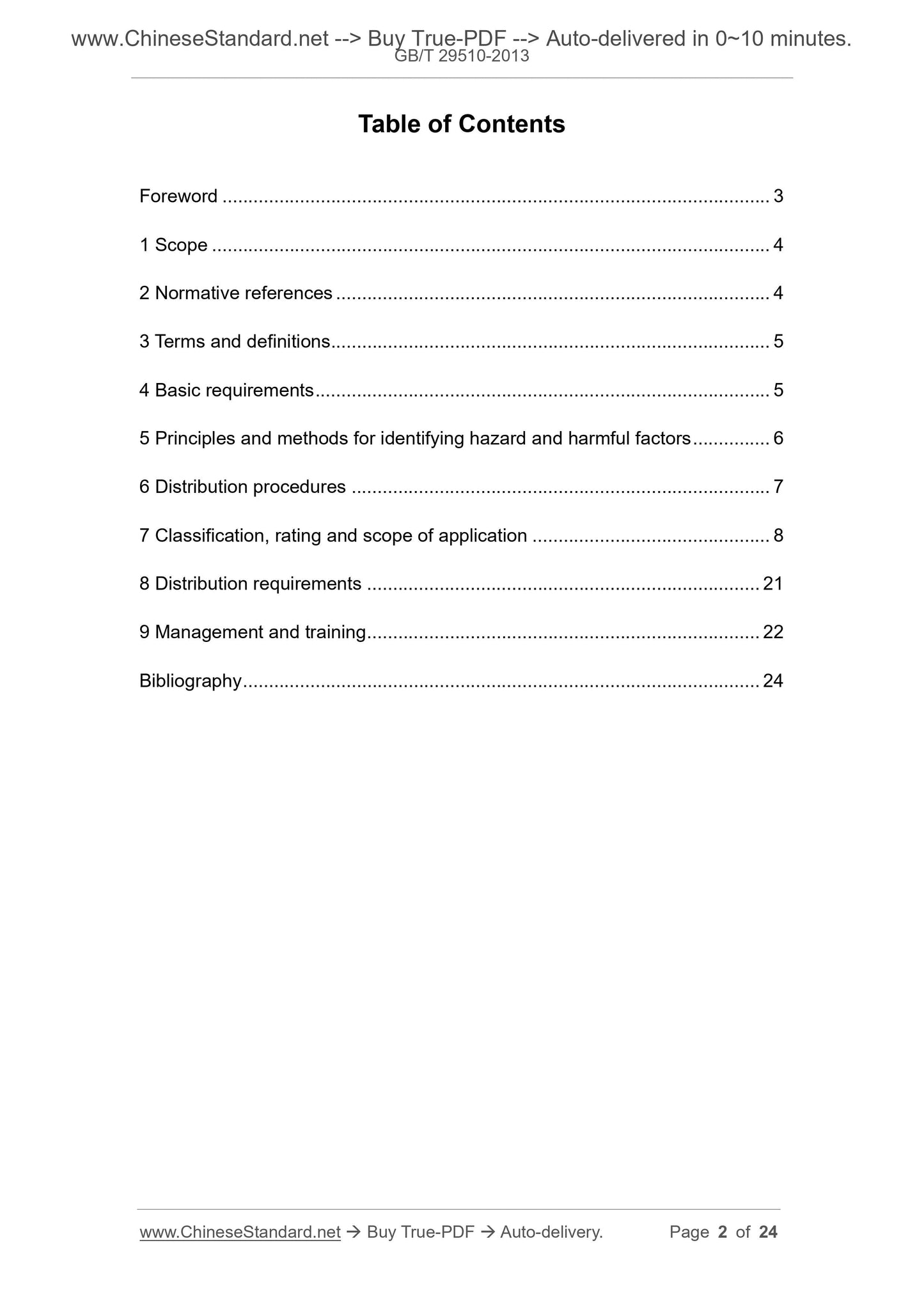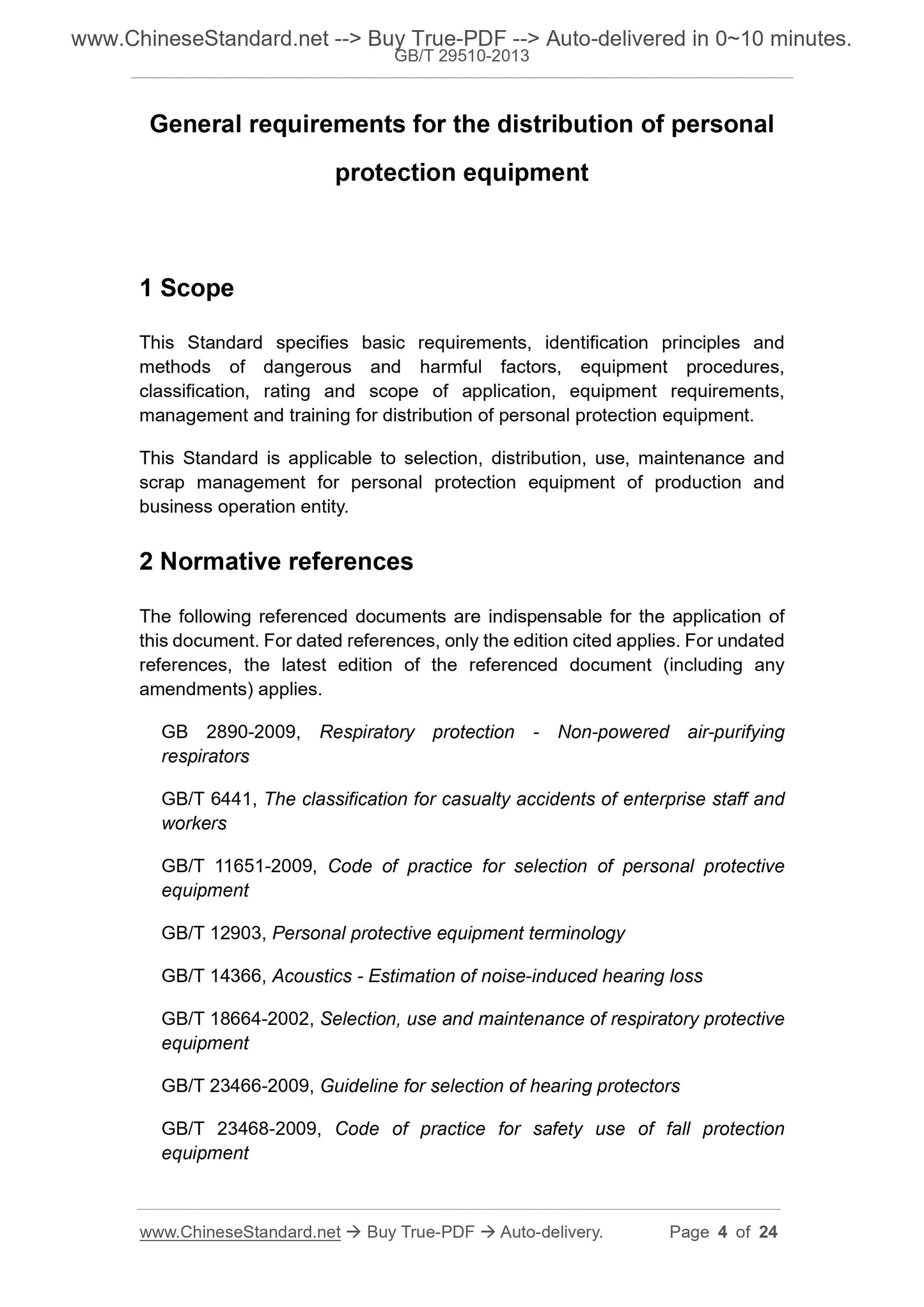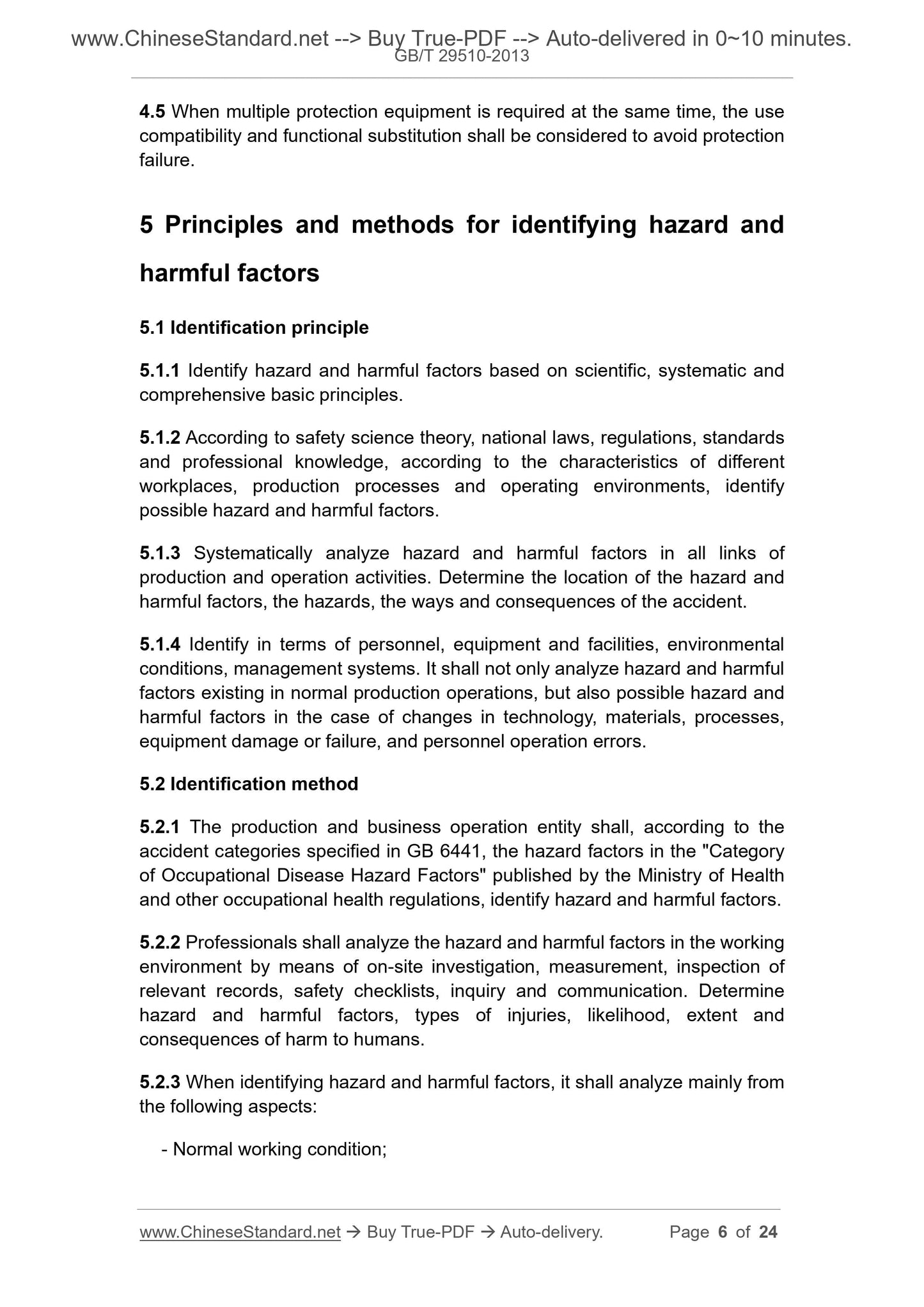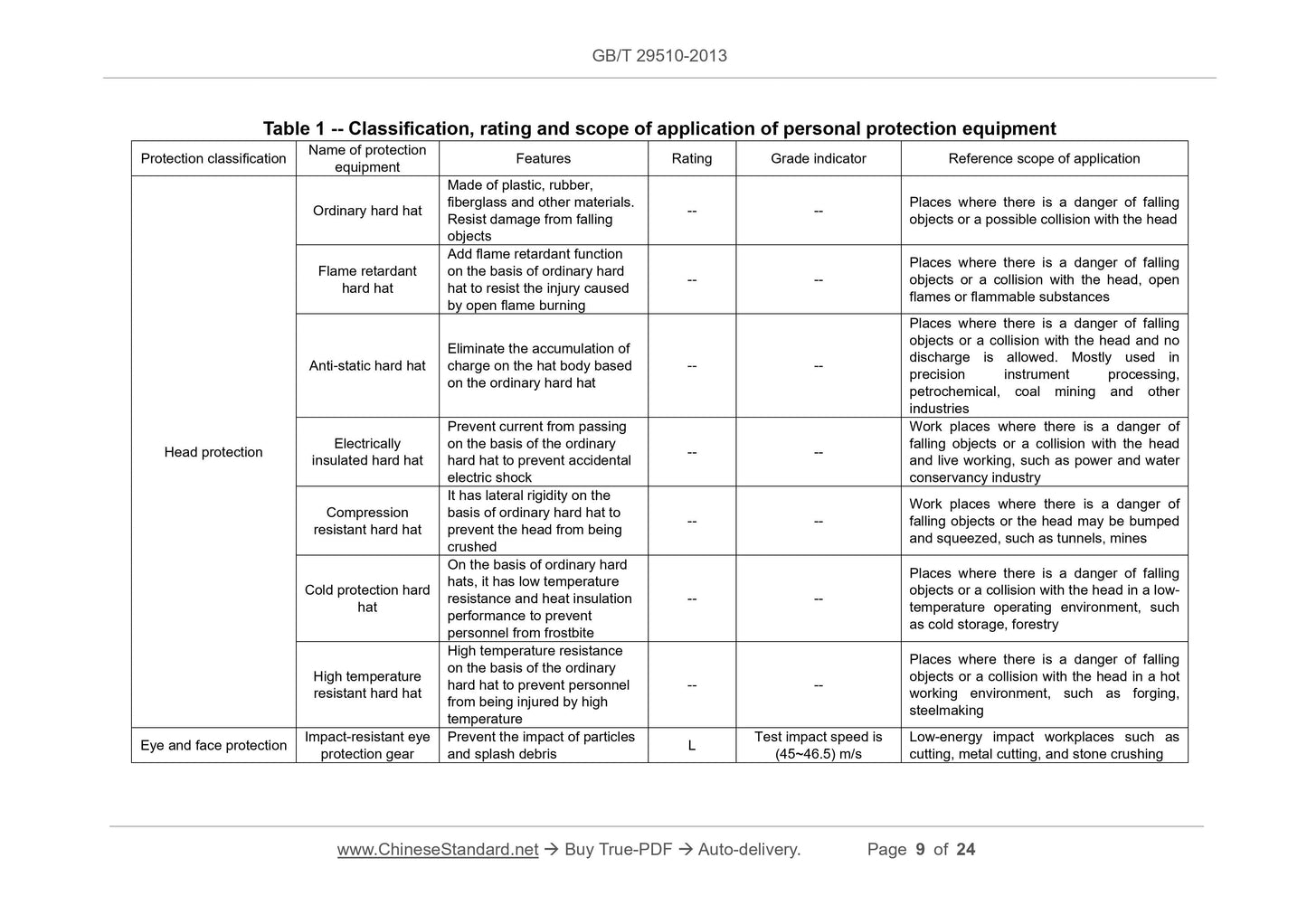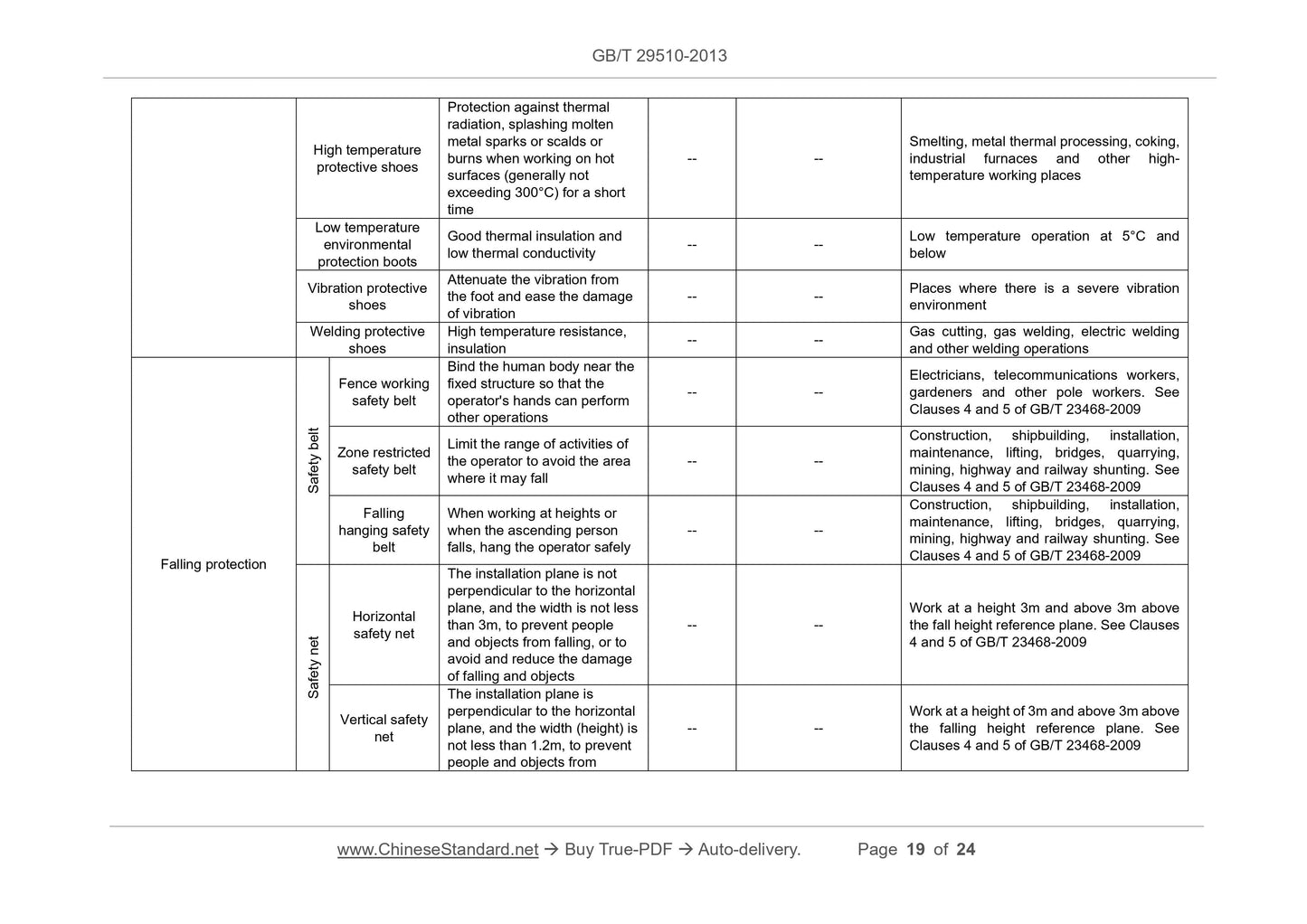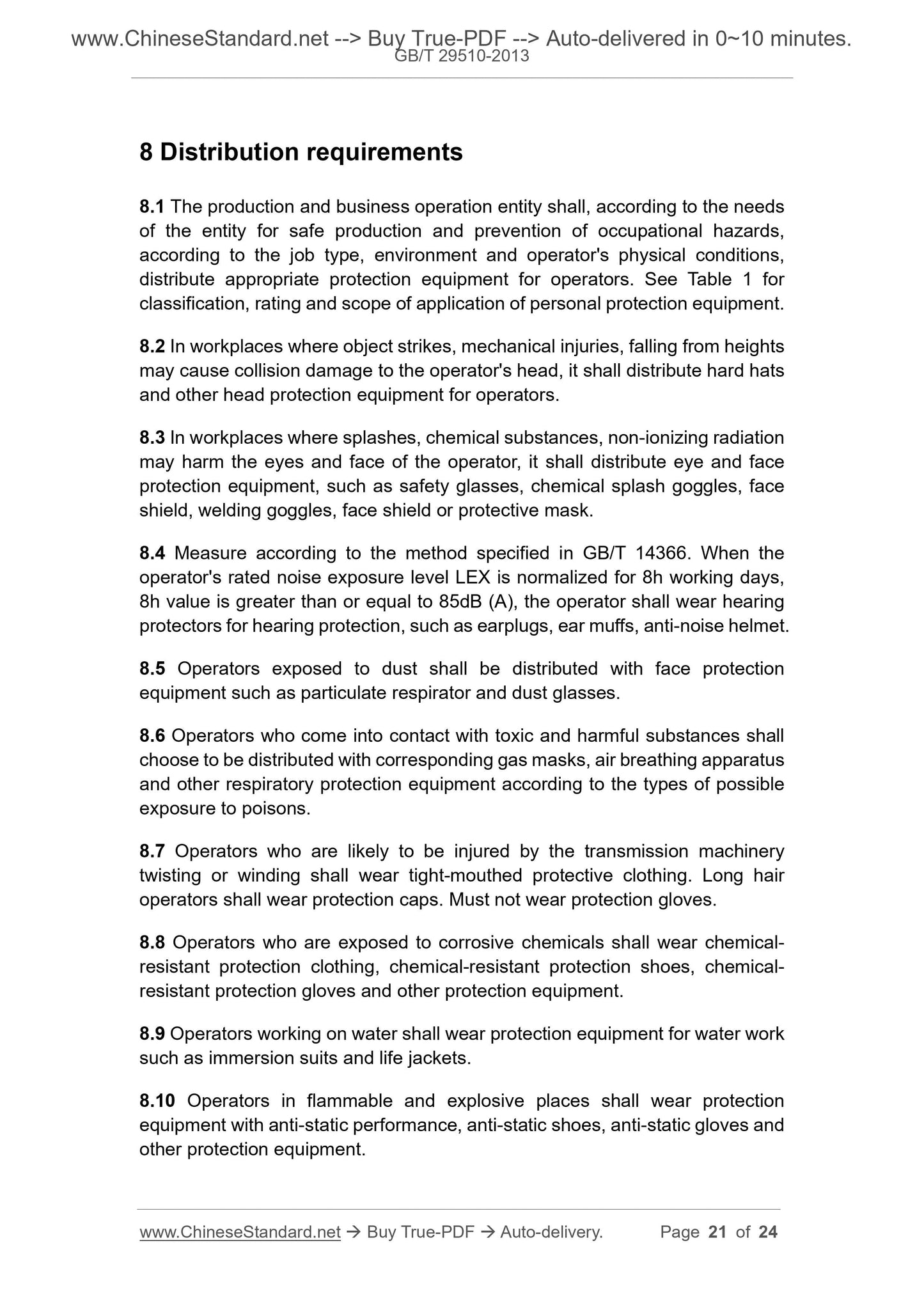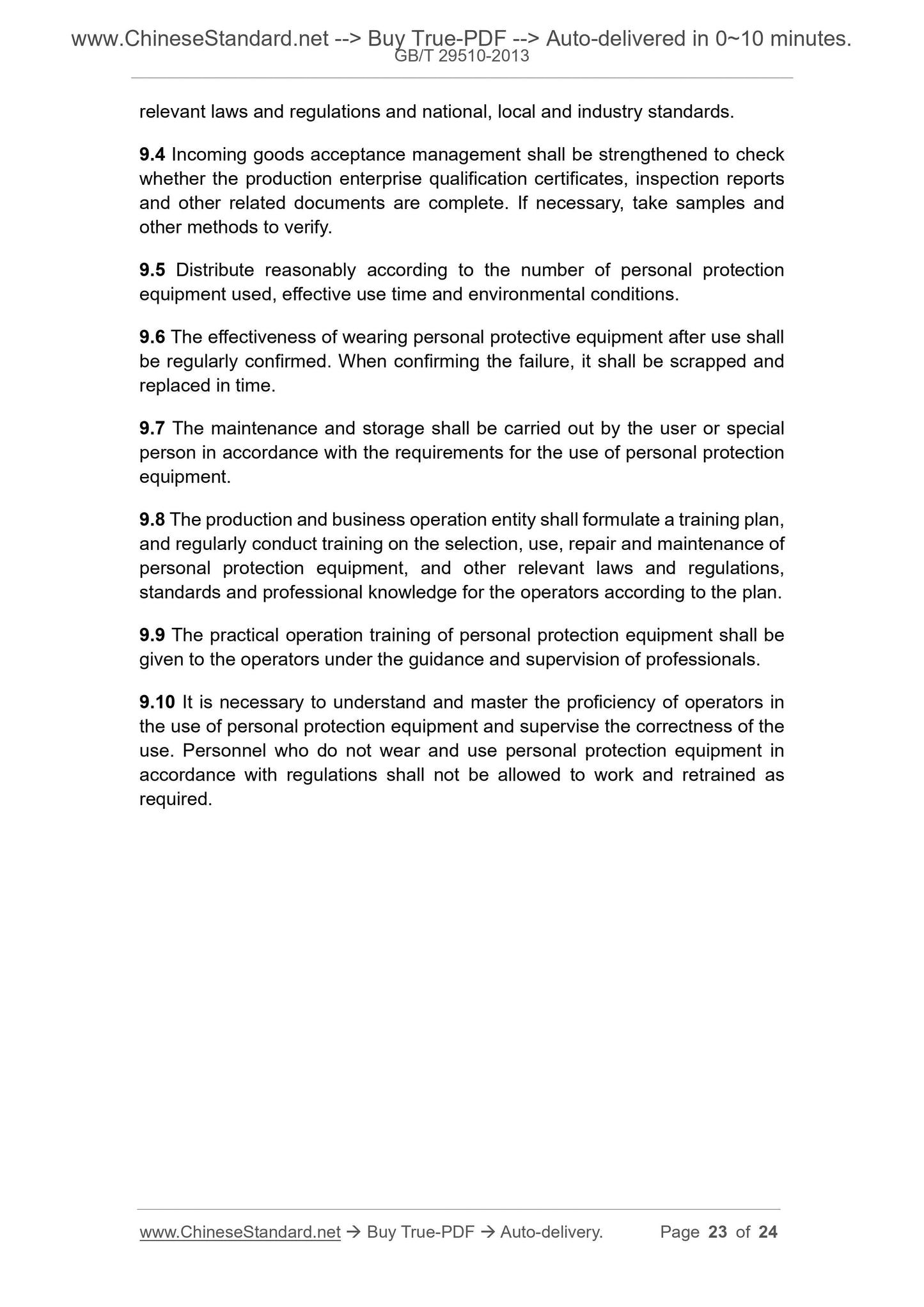1
/
of
9
www.ChineseStandard.us -- Field Test Asia Pte. Ltd.
GB/T 29510-2013 English PDF (GB/T29510-2013)
GB/T 29510-2013 English PDF (GB/T29510-2013)
Regular price
$220.00
Regular price
Sale price
$220.00
Unit price
/
per
Shipping calculated at checkout.
Couldn't load pickup availability
GB/T 29510-2013: General requirements for the distribution of personal protection equipment
Delivery: 9 seconds. Download (and Email) true-PDF + Invoice.Get Quotation: Click GB/T 29510-2013 (Self-service in 1-minute)
Newer / historical versions: GB/T 29510-2013
Preview True-PDF
Scope
This Standard specifies basic requirements, identification principles andmethods of dangerous and harmful factors, equipment procedures,
classification, rating and scope of application, equipment requirements,
management and training for distribution of personal protection equipment.
This Standard is applicable to selection, distribution, use, maintenance and
scrap management for personal protection equipment of production and
business operation entity.
Basic Data
| Standard ID | GB/T 29510-2013 (GB/T29510-2013) |
| Description (Translated English) | General requirements for the distribution of personal protection equipment |
| Sector / Industry | National Standard (Recommended) |
| Classification of Chinese Standard | C73 |
| Classification of International Standard | 13.340.01 |
| Word Count Estimation | 17,155 |
| Quoted Standard | GB 2890-2009; GB/T 6441; GB/T 11651-2009; GB/T 12903; GB/T 14366; GB/T 18644-2002; GB/T 23466-2009; GB/T 23468-2009; GB/T 24536-2009 |
| Regulation (derived from) | National Standards Bulletin 2013 No. 6 |
| Issuing agency(ies) | General Administration of Quality Supervision, Inspection and Quarantine of the People's Republic of China, Standardization Administration of the People's Republic of China |
| Summary | This standard specifies the PPE with the basic requirements of the Hazardous Factors principles and methods of identification with the program, sorting, grading and scope, staffing requirements, management and training. This standard applies to production |
Share
